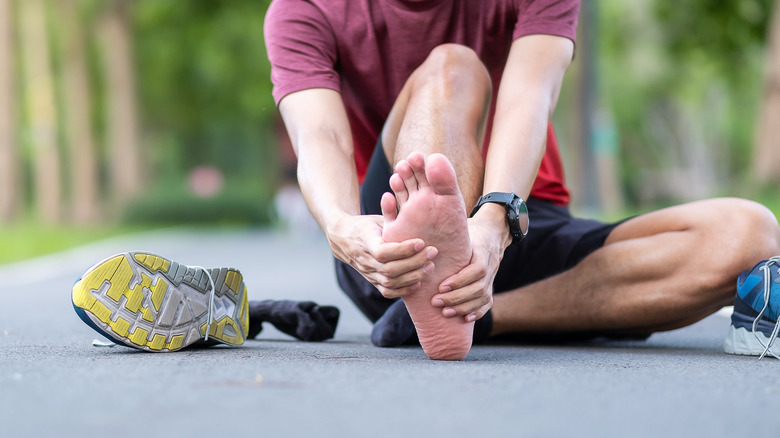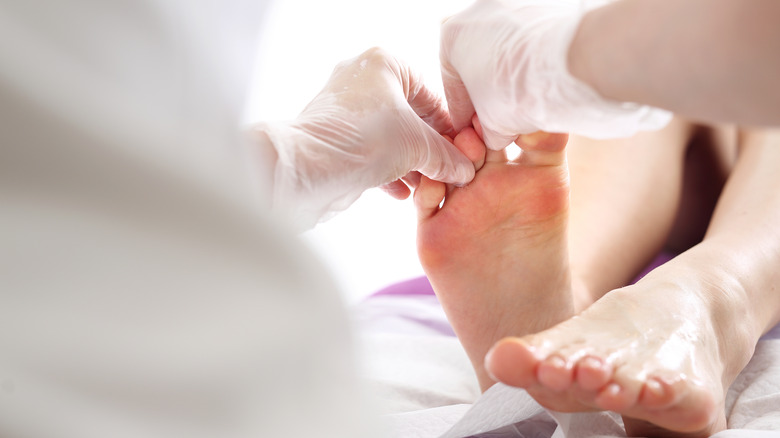This Is What Happens When Athlete's Foot Goes Untreated
Let's face it. Athletes are attractive. They are often toned, coordinated, and driven individuals who will stop at nothing to reach their goals. Even the sweat they work up while training doesn't hurt their appeal. Yes, there are many images that we conjure up when we think about athletes. But unfortunately, not all of them are equally as desirable. Enter athlete's foot. Besides the intense itch and uncomfortable burn, this fungal infection has a few other unsightly and unpleasant symptoms. "Your toenails may also get thick and crumbly and, in severe cases, may even fall off," says Marcela Correa, a medical pedicurist and owner of Medi Pedi NYC, via Byrdie.
Athletes are at extra risk for this condition because all that extra moisture in their training shoes can help develop the fungus. But according to Medical News Today, it's not just athletes who suffer with bouts of this uncomfortable infection. In fact, around 70% of the population will feel the itch at some point in their lives.
Take action before the fungus spreads to create even more alarming conditions
Luckily, if you've come down with this fungal itch, there are many ways to treat it. Byrdie suggests using a shoe sterilizer, or applying an anti-fungal cream or medicated foot cream to banish the burn. Trust us. The extra time and attention you spend tending to your athlete's foot will be well worth it. Medical News Today warns that if left untreated, this fungal infection can cause open sores, lead to a secondary bacterial infection, or spread to your toenails in a condition known as onychomycosis. This can lead to inflammation and make it painful to walk or even put on your shoes. Even more alarming is that athlete's foot could also lead to cellulitis, which increases your risk of blood poisoning or a bone infection. And treating your athlete's foot is important for others around you as well — the infection is very contagious and can spread through both direct and indirect contact.


